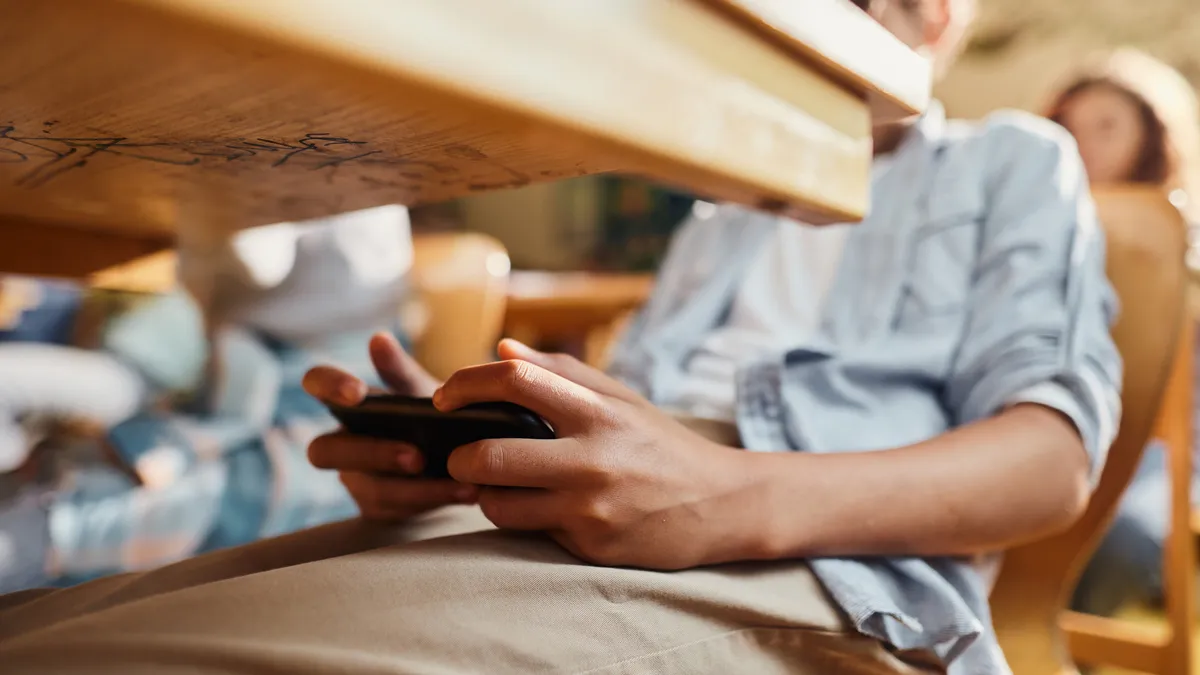As school-level educators struggle to keep students off personal devices during school hours, policymakers in several states have proposed policies to limit the distractions.
Last month, the Alabama State Board of Education adopted a resolution encouraging local school boards to set policies limiting student phone use. "It is in the best interest of students, administrators, teachers, and employees to minimize distractions and disruptions during instructional time, which is so important to increase academic proficiency," the resolution said.
A proposal in the Vermont General Assembly would prohibit personal device use in public and private schools, career and technical education centers, and some pre-K programs.
That bill also goes further, recommending that school governing boards adopt policies that would allow students to opt out of using school-issued electronic devices and online products. For students who opt out, classes using digital learning tools would need to provide alternative instruction methods.
The legislation gives an exception to students whose physicians determine a personal electronic device is necessary for the students' health.
And in Utah, Gov. Spencer Cox in January sent letters to district and charter school leaders, school principals, and others voicing concern about social media use among children and asking educators to remove cellphones during class time.
"Cell phone-free learning environments will help our teachers teach and our students learn," Cox said in a statement. "We want to give our schools every opportunity to succeed and so I hope our local school districts and charter schools will join me in this effort to keep phones in backpacks or lockers during class time.”
Cox's statement included examples of how two schools curbed student cellphone use with one school using individual pockets hanging at the front of classrooms for students to store their phones and another banned cellphone use in classrooms, the cafeteria and in hallways.
Bills supportive of limits on student cellphone use during school hours were also introduced in the most recent legislative sessions in Oklahoma, Virginia and Kansas.
Another proposal in Kentucky calls for schools to limit screen time for students regardless of instructional model. Under that legislation, computer, television or device use would be limited to a half-hour for K-1 students, with increasing time limits for older students capped at two hours for 9-12 students.
Concerns and pushback
At the national level, a bipartisan bill in the Senate proposes a study on the mental health and academic impacts of cellphone use in K-12 classrooms. That legislation suggests a pilot program that would provide participating schools with secure containers to store students’ phones during school hours.
Cellphone bans, in some cases, are met with resistance by students and parents. Last month, students at James Madison High School in Houston Independent School District, walked out to protest enforcement of a cellphone ban, according to the Houston Chronicle.
Some local news reports said that while the district has a policy restricting student phone use during the school day, that policy was recently being enforced at Madison High School.
In a Feb. 5 post on X, formerly known as Twitter, the Houston Education Association, a local teacher union affiliated with the National Education Association, shared a list of demands from Madison High School students, including a request that the cellphone ban be repealed.
A Common Sense Media study last year that analyzed the smartphone data of 200 students found 97% of 11- to 17-year-olds used their phones during the school day. The amount of daily in-school cellphone time ranged from less than a minute to 6 1/2 hours, with a median time of 43 minutes.














